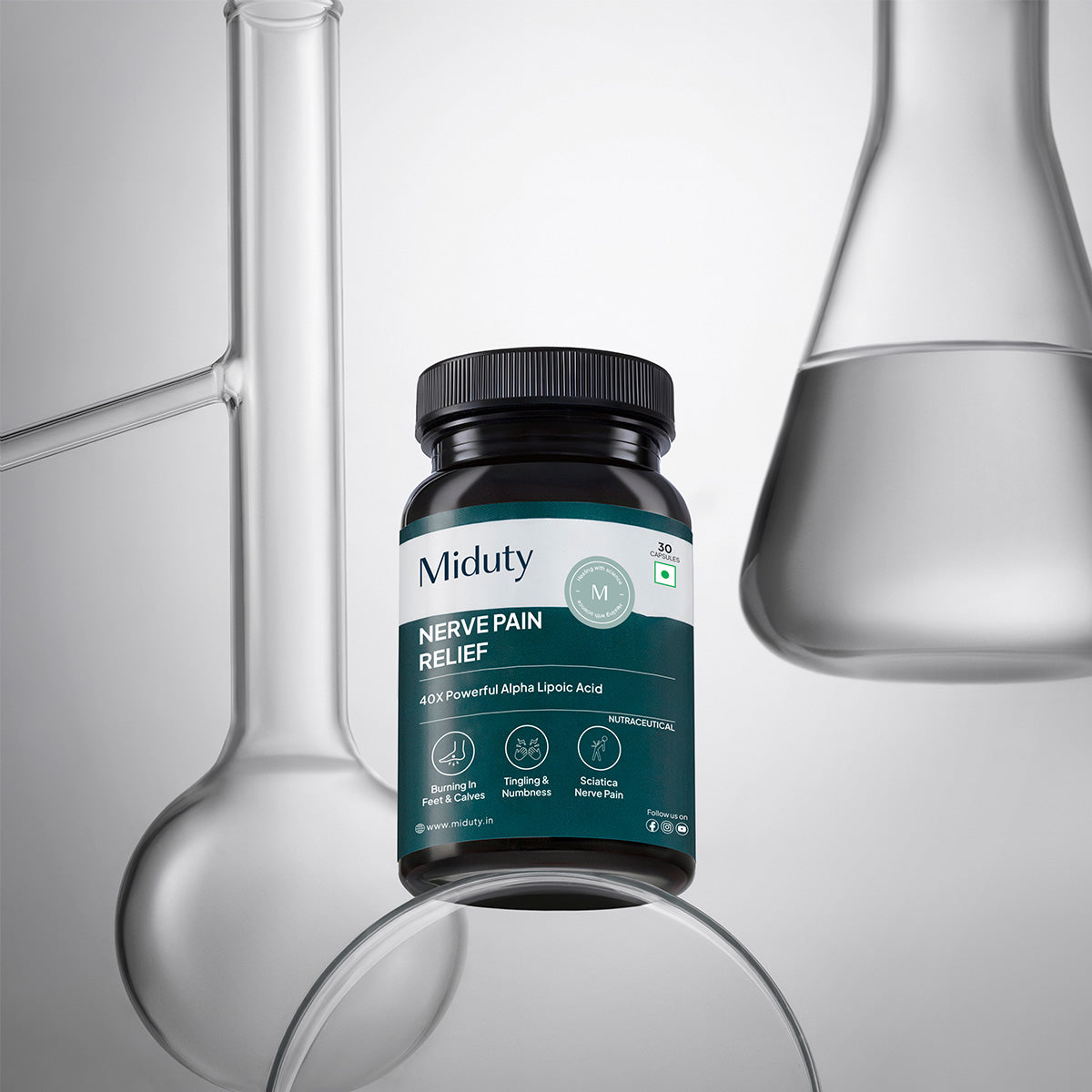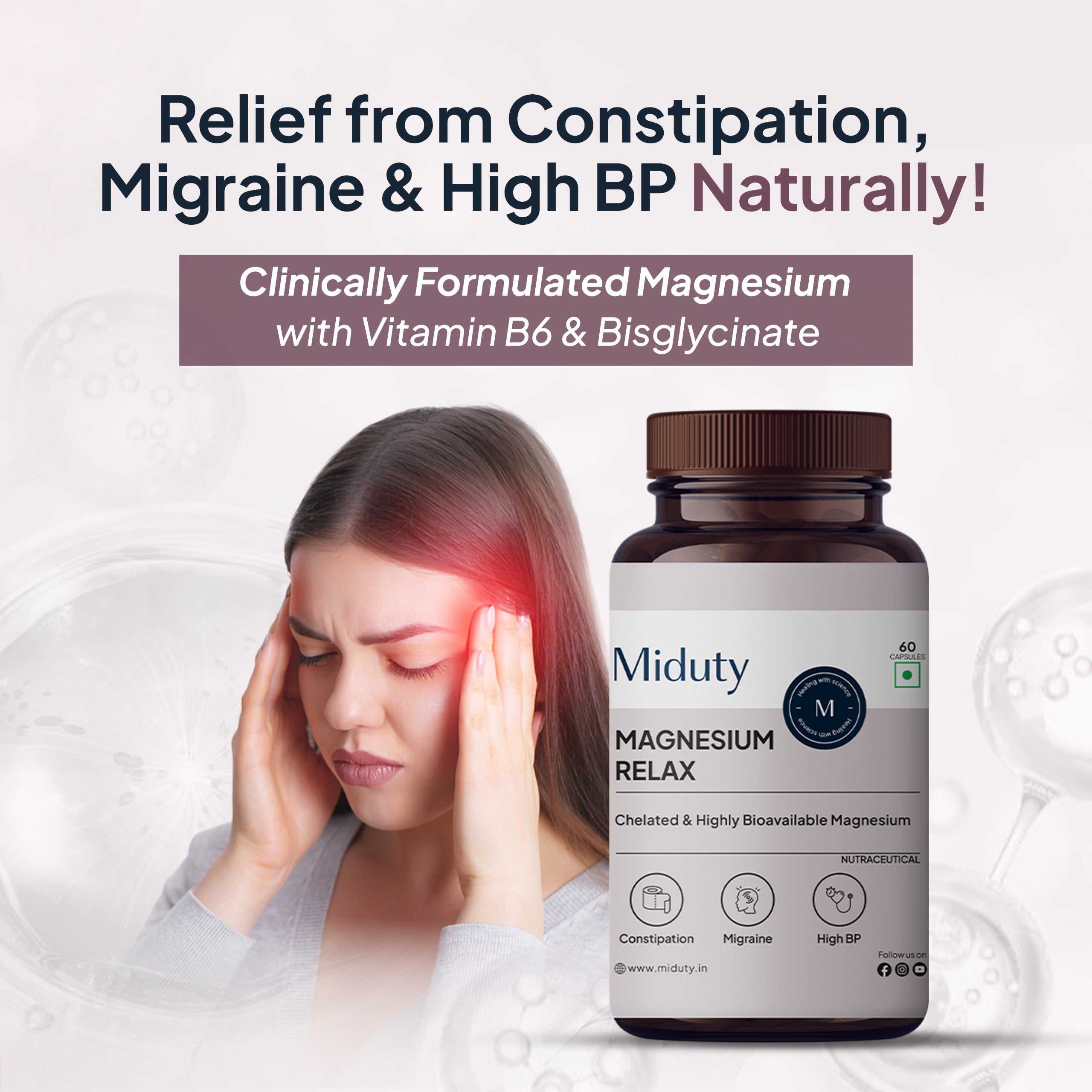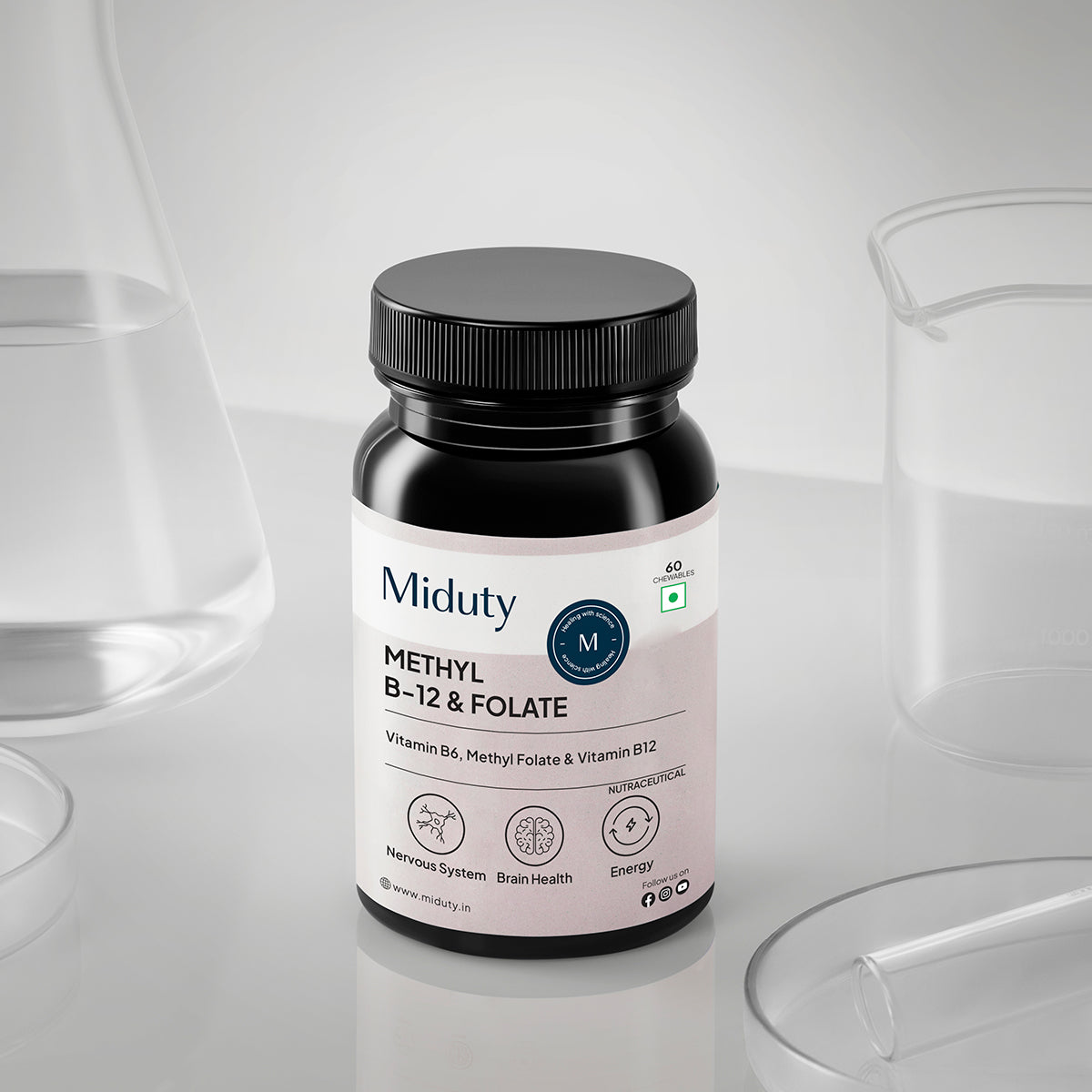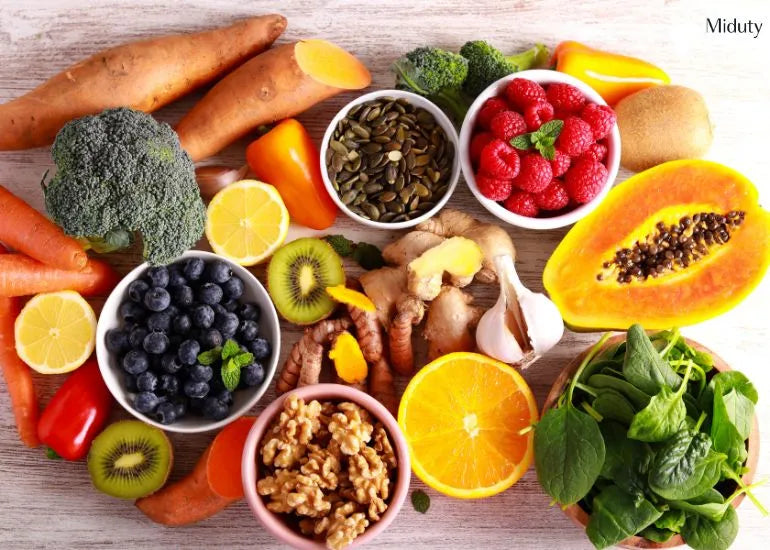
Yoga For Varicose Veins: 5 Best Asanas, Tips & Precautions
Do your legs often feel heavy, swollen, or achy, especially after standing or sitting for long hours? You're not alone. Nearly 30% of the population suffers from varicose veins at some point in their lives. It is a condition where veins, usually in the legs, become twisted, enlarged, and painful due to poor blood circulation.
The root cause is faulty vein valves that allow blood to pool in your legs instead of flowing back to your heart.
Now here's the good news: regular physical movement especially yoga can significantly help. Research shows that specific yoga poses can increase venous return, stimulate lymphatic drainage, and even lower blood pressure in leg veins. And unlike high-intensity workouts, yoga offers gentle, sustainable relief without overloading your system.
Let's explore how simple yoga for varicose veins can naturally support your vein health—and help you feel lighter, stronger, and more mobile.
Key Takeaways
1. Yoga improves leg circulation: Inverted poses like Legs-Up-the-Wall help blood flow back to the heart. Just a few minutes daily can reduce swelling and heaviness.
2. 20 minutes a day makes a difference: A short daily yoga routine activates calf muscles, boosting venous return by over 30%.
3. Reduce Inflammation & Stress: Yoga lowers cortisol and inflammation, both linked to worsening varicose vein symptoms.
4. Safe for All Age Groups: Yoga is low-impact and customizable ideal even for beginners or seniors managing vein discomfort.
What Are Varicose Veins?
Varicose veins are swollen, twisted veins that appear blue or dark purple, commonly seen on the legs and feet. They occur when the valves inside the veins become weak or damaged, making it difficult for blood to flow back to the heart. This causes blood to pool, leading to bulging, visible veins.
In India, varicose veins are a growing concern, especially among people who stand or sit for long hours, like shopkeepers, teachers, and office workers. Factors like a sedentary lifestyle, obesity, pregnancy, and even genetics contribute to this problem. Although often seen as a cosmetic issue, varicose veins can cause pain, leg heaviness, swelling, and discomfort if left untreated.
With a significant percentage of India's adult population suffering from varicose veins, many cases still go unnoticed until symptoms worsen. Early attention is crucial, as ignoring varicose veins can lead to complications like skin ulcers, infections, and blood clots.
In short, varicose veins are not just a cosmetic concern, they are a sign that your circulatory system needs care.
Why Yoga is Effective for Varicose Veins?
In India, where long hours of standing or sitting are common in professions like teaching, retail, and IT, varicose veins are becoming more frequent. Yoga helps by improving blood circulation, especially venous return, which often weakens in varicose vein sufferers.
Simple yoga poses, especially those involving leg elevation, use gravity to assist blood flow from the legs back to the heart. Unlike intense workouts, yoga is gentle on veins while enhancing muscle tone in calves, thighs, and core. Stronger muscles act as natural pumps, improving circulation without adding strain.
Breathing exercises (pranayama) further boost oxygenation and reduce inflammation. Yoga also calms the nervous system, lowering stress hormones that worsen vein problems.
How Yoga Reduces Pressure on Veins?
Think of varicose veins as traffic jams in your legs. Yoga clears this "traffic" by improving alignment and muscle flexibility. Poses focusing on the hips, hamstrings, and calves reduce vein compression, easing blood flow.
Leg elevation poses, like Viparita Karani (Legs Up the Wall), give immediate relief from swelling and discomfort. Yoga also sharpens body awareness, helping individuals notice early signs of vein stress and take preventive action.
5 Best Yoga Asanas for Varicose Veins
1. Legs Up the Wall Pose (Viparita Karani)

In India, where many people stand for hours or sit for long hours in offices, Viparita Karani is a must-do pose. Simply lie on your back with your legs up against a wall. This position uses gravity to help blood flow back to the heart, easing leg fatigue and swelling. Practicing 10-15 minutes daily reduces discomfort and improves circulation. It's safe, gentle, and ideal for all age groups.
2. Downward-Facing Dog (Adho Mukha Svanasana)

This classic yoga pose strengthens muscles and supports blood circulation. By creating an inverted V-shape, Downward Dog encourages blood flow from legs upward, relieving pressure in varicose veins. It also stretches the calves and hamstrings, areas often tight in Indian lifestyles, whether from long commutes or standing jobs.
3. Standing Forward Bend (Uttanasana)

A simple yet effective pose, Uttanasana involves bending forward, letting gravity assist blood flow back to the heart. Perfect after long periods of sitting, it stretches leg muscles, reduces swelling, and calms the mind. Just a minute of this pose refreshes tired legs.
4. Supported Shoulder Stand (Sarvangasana)

For a stronger inversion, Sarvangasana is highly beneficial. It boosts blood circulation, reduces leg swelling, and supports hormonal balance. Beginners should use props and proper guidance. For Indian women dealing with pregnancy-related vein issues, this pose (with modifications) can be very effective.
5. Butterfly Pose (Baddha Konasana)

Popular in Indian yoga routines, Butterfly Pose opens hips, improves lower body circulation, and relieves tension from sitting cross-legged or on chairs. Practicing this pose daily improves venous return and reduces stress, two major factors in managing varicose veins.
Yoga Routine for Varicose Veins
Warm-Up: Start with simple ankle rotations, leg lifts, and gentle calf stretches to activate blood flow. Combine with deep breathing for 5–10 minutes to relax the body and prepare circulation.
Core Poses: Begin with Legs Up the Wall (Viparita Karani) for a few minutes. Follow with Butterfly Pose (Baddha Konasana) and Standing Forward Bend (Uttanasana). Add Downward Dog (Adho Mukha Svanasana) to stretch and strengthen legs. If comfortable, try Supported Shoulder Stand (Salamba Sarvangasana) with props. Hold each pose 30 seconds to 1 minute, repeat 2–3 times.
Cool-Down: Finish with gentle twists, light stretches, and Shavasana for 10 minutes. Use slow breathing or guided meditation to calm the mind and improve circulation.
Lifestyle Tips Alongside Yoga
Diet & Hydration: Drink plenty of water to keep blood thin and flowing well. Eat fiber-rich foods like leafy greens, fruits, nuts, and fatty fish to reduce inflammation and constipation. Include flavonoid-rich foods such as citrus, onions, and garlic to strengthen veins. Avoid excess salt, sugar, and processed foods to prevent swelling and inflammation.
Compression & Yoga: Wearing compression stockings during gentle yoga helps improve blood flow. Remove them for poses requiring flexibility or inversions. Consult a doctor for the right fit.
Daily Habits: Walk at least 30 minutes daily to boost circulation. Elevate legs for 10–15 minutes after long sitting or standing. Avoid tight clothes, maintain a healthy weight, and take stretch breaks during inactivity.
How to Choose Supplement for Varicose Veins?
When choosing a supplement for varicose veins, look for ingredients that support healthy blood flow and vein strength. A powerful combo is Horse Chestnut Extract, which reduces leg swelling and improves vein tone, and Alpha-Lipoic Acid (ALA) especially in a potent 40x concentrated form to fight oxidative stress that damages blood vessels. Together, they reduce heaviness, pain, and inflammation in the legs. Choose a clean formula with clinically studied doses and no unnecessary fillers.
Precautions and Contraindications
Avoid deep lunges, Warrior, Tree pose, and advanced inversions like Headstand if you have severe varicose veins. Hold poses gently with movement to prevent blood pooling. Stop if you feel pain or swelling. Seek guidance from a certified yoga therapist familiar with varicose veins for a safe practice.
Conclusion
Varicose veins may be common, but they're not something you have to live with silently. Yoga offers a gentle, effective, and holistic approach to managing this condition. From boosting circulation and reducing swelling to alleviating pain and promoting mental well-being, yoga addresses the root causes of venous issues rather than just masking symptoms.
By incorporating simple yet powerful poses like Viparita Karani, Downward Dog, and Butterfly Pose into your daily routine, you can experience noticeable relief. Coupled with lifestyle adjustments such as proper hydration, a balanced diet, and compression therapy, yoga becomes an invaluable ally in your journey towards healthier veins.
Consistency, mindfulness, and patience are key. Remember, yoga is not about perfection but progression. Every stretch, every breath, and every mindful moment contributes to your healing process. So, unroll your mat, elevate those legs, and embrace yoga as your go-to remedy for varicose veins.
Frequently Asked Questions on Yoga for Varicose Veins -
Q1 - Can yoga heal varicose veins?
Yoga may not completely heal varicose veins, but it can significantly reduce symptoms like swelling, pain, and heaviness by improving circulation and relieving pressure on the veins.
Q2 - Can massage remove varicose veins?
Massage can ease discomfort and improve blood flow temporarily, but it cannot remove varicose veins. In fact, deep pressure should be avoided directly on bulging veins to prevent further damage.
Q3 - Which mudra is good for varicose veins?
Apana Vayu Mudra is often recommended for improving blood circulation and calming the nervous system. Practicing it daily for 15–20 minutes may help in managing symptoms.
Q4 - Which asana is best for varicose veins?
Viparita Karani (Legs-Up-the-Wall Pose) is considered the most beneficial asana. It uses gravity to promote venous return and relieve leg fatigue.
Q5 - How to remove varicose veins naturally?
While complete removal may need medical intervention, natural ways like yoga, walking, elevating legs, wearing compression stockings, and maintaining a healthy weight can reduce their appearance and symptoms.
References
| Sr. No. | Reference Links |
| 1. | Varicose Veins |
| 2. | A study of the effects of Yogic Interventions on Varicose Veins |












